Now we want to bring up the subject of mastering with headphones. We are going to look into this thoroughly. Hopefully, after reading this you will feel much more clarity regarding using headphones for mastering or not.
Picture this situation:
You are working with a mix or master in your studio until it sounds great. The bass is slamming and the whole mix sparkles.
After that you take it to a friend to listen and it sounds nothing like it did in the studio. Now the bass is a boomy mess. It is really like someone has thrown a blanket over the speakers.
What happened here?!?
The concept of translation when mastering
Maybe you recognize this situation or have experienced something similar. This is a sure sign that the monitoring in the studio does not translate well. A great monitoring system will let you create mixes and masters that you can listen to and recognize anywhere. In general, you will not be surprised by some aspect that you did not notice before. To get a monitoring system that has good translation and is suitable for mastering, there are some things that you need.
- A full frequency response. You need to be able to hear what is going on from the lowest frequencies to the highest.
- A flat frequency response. The material is presented neutrally without having some frequencies louder or quieter than others.
- A correct stereo representation. You are able to judge the stereo width of the master. Moreover you have a proper balance between the things in the center and the things on the sides.
- A wide dynamic range. Simply put, loud stuff should sound loud, and quiet stuff should sound quiet. This happens without anything getting lost or flattened.
- Low distortion. You are able to hear the music cleanly without additional coloration from the monitoring system.
Ok, let us break this down a bit. Dynamic range and low distortion is mostly a matter of speaker quality. Some are better, and some are worse. There is usually a correlation between price and performance.
Then there is the full and flat frequency response. We want to hear from preferably 20 Hz, but at least from 30 Hz and up. This usually means big full range speakers, or smaller speakers with subwoofers.
Room acoustics for speakers
The speakers will be set up in a room. The room will influence what the listener hears to a very large extent. This is where the elaborate and impressive room designs come from. In particular to manage reflections, resonances, bass build-up, sound isolation and many other things. All of these things need to be addressed if we want a full and flat frequency response as well as a good stereo image.
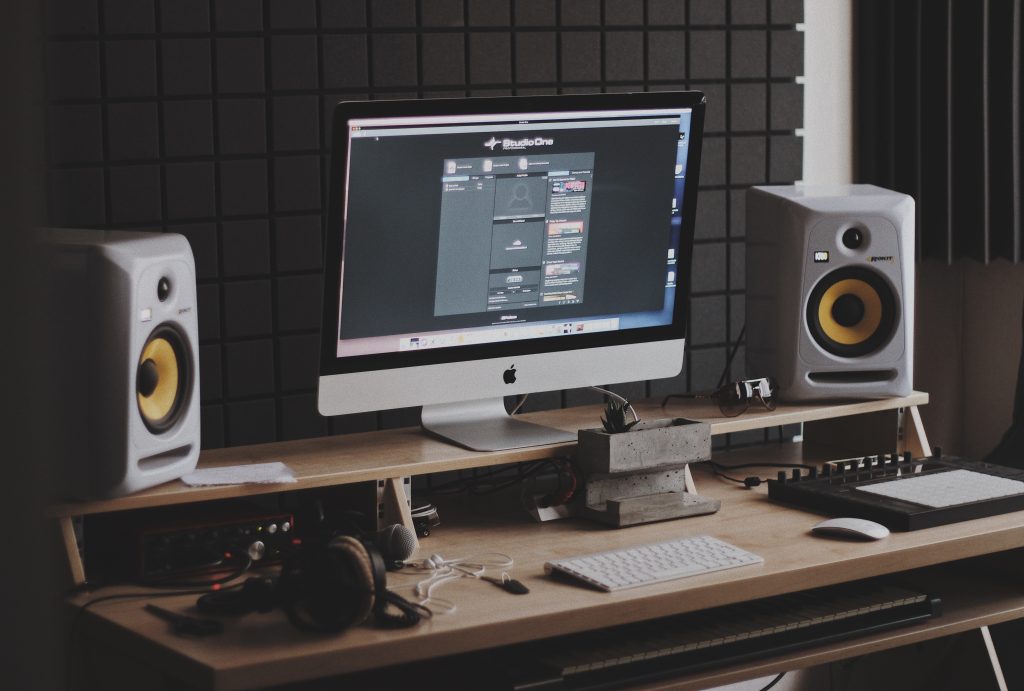
Photo by Oleg Ivanov on Unsplash
The truth is, however, that most smaller control rooms have compromises made in these areas. We are now talking about 10 dB dips and peaks in the low end, or more. This is far from flat. The good thing is that the human brain is amazing and we can learn how a room sounds and work around many obstacles. But make no mistake, there are huge differences in cost and effort between an ok-ish and an amazing control room.
Maybe you have your studio in a smaller space, maybe at home in the basement or in your bedroom. Maybe you do not have the possibilities to go all in with a fully treated control room. Then it will be almost impossible to get a great monitoring setup using speakers, especially when it comes to the low-end. And you really need full control over the low-end when you are mastering. It is important while mixing, but absolutely necessary while mastering.
Headphones are a good alternative to speakers when mastering music
Luckily enough, there are no laws stating that you need to use speakers when mastering music. People generally choose speakers because it is a convention that has produced the best and most consistent results for years. For various reasons, to make decisions while listening to a proper speaker setup will give results that translates really well.
However, one can achieve this by using headphones as well. As it turns out, good headphones excel at presenting a full and flat frequency response with a wide dynamic range and low distortion. This is actually something that people struggle with in many rooms and speakers. You will find it a complicated and usually very expensive process to build a room with a low-end as full and flat as in good headphones.
An example of headphones you can use with really good result regarding this is the
On the even less expensive side of things, there are headphones like the
So, what is the catch here? Why are people in general led to believe that mastering in speakers is so superior to mastering in headphones?
Stereo representation when mastering in speakers
The area where speakers have traditionally excelled is stereo representation. The stereo standard is based upon the classic 60 degrees setup. That is, you draw a triangle between the speakers and the listener and you make sure that each side has equal length. Then you have the standard 60 degrees stereo setup.
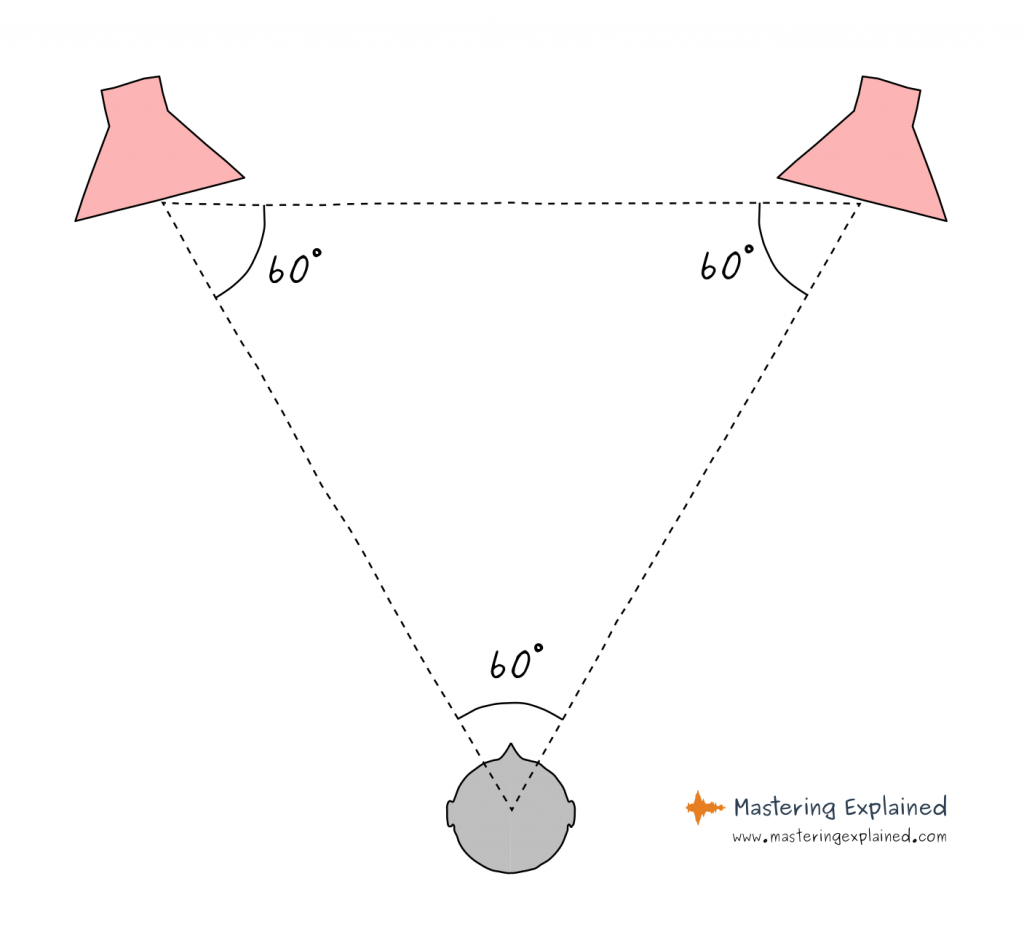
This is how things have been done for decades. And it works. If you mix master in this setup you will get good translation. The result will sound good when you listen back on speakers, both stereo and mono, as well as in headphones. The same can not be said for mixes or masters that you create in plain headphones, as the stereo representation in those is quite different. However, you can do something about that, which we will talk about in a moment.
Listening to speakers will present a soundstage that is spread out in front of you. Mono sources that are panned fully to the left will appear to be coming from the left speaker. Mono sources panned to the center will appear to be coming from a point in between the two speakers in front of you. That point in front of you is called the phantom center. That is because there is no actual speaker in the center even though it sounds like the sound is coming from one. Pan the mono source to another place in the stereo field and you will perceive it as coming from the corresponding place between the speakers.
Stereo representation when mastering in headphones
The main difference between listening in speakers versus listening in headphones is something that is called cross feed. When you listen to a speaker setup both your ears will hear both the speakers. The sound from the left speaker will reach both your left and your right ear. The right ear will hear a slightly delayed and filtered version.
In headphones, your right ear will only hear the right element, and the left ear only the left element. Consequently, this is why you get the differences in stereo representation in headphones vs speakers.
When you listen in headphones you perceive the music differently. A mono source panned fully to the left, you will hear only in your left ear. You will perceive this as relatively unnatural and unpleasant. In nature, we simply will not hear many sounds through only one ear, so our brains do not really know what to make of it. Also, a mono source panned to the center, will appear to come from an undefined place within your head when you listen in headphones. Compared to that phantom center we get in speakers the experience will be different. As you move the source around (panning it) you will continue to hear it at various different points in your head as you listen in headphones.
To sum it up in headphones you get an ultra-wide, unnatural, internalized representation of the stereo image. If you listen to a well-balanced stereo mix it is usually very pleasant in headphones. It gives you a different but equally interesting and enjoyable presentation of the music, compared to listening in speakers. But actually producing the music, and making decisions about the sound? Nope, you will find that very hard to do.
Add cross feed to get a correct stereo representation in headphones
Luckily, there is a way for you to listen in headphones while tricking the brain into believing that you are listening to speakers. Now the brain can interpret and give meaning to the sound that you are listening to. We do not need to get further into the theory about how this is done. People have thought hard about this and produced some great sounding solutions for creating a speaker-like experience using headphones.
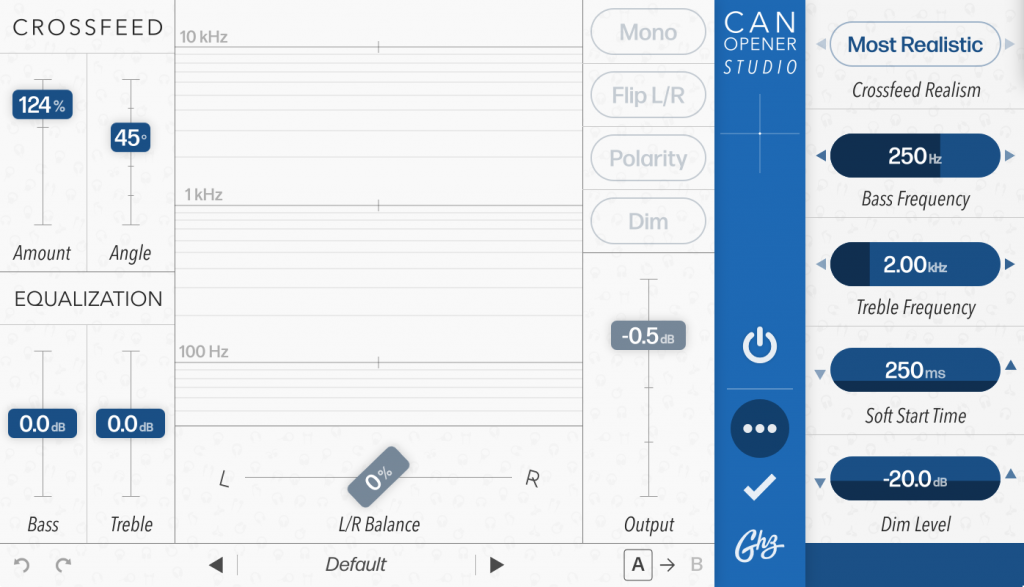
Our favourite solution is a plugin called CanOpener Studio from GoodHertz. Using this plugin produces a beautiful external presentation of a great monitoring system. Things are placed exactly where they should be in the stereo image, and the results translate very well.
There are other solutions as well, for example Waves NX or ToneBoosters Isone. These produce great results as well. Try them out to hear which one that gives you the best result. We have found that CanOpener will add the least coloring to the sound compared to the other alternatives, but your ears might hear things differently.
Headphone calibration
We also use a correction software called Reference from Sonarworks, that evens out the kinks in the frequency response of the HD600:s we use. It works really well.
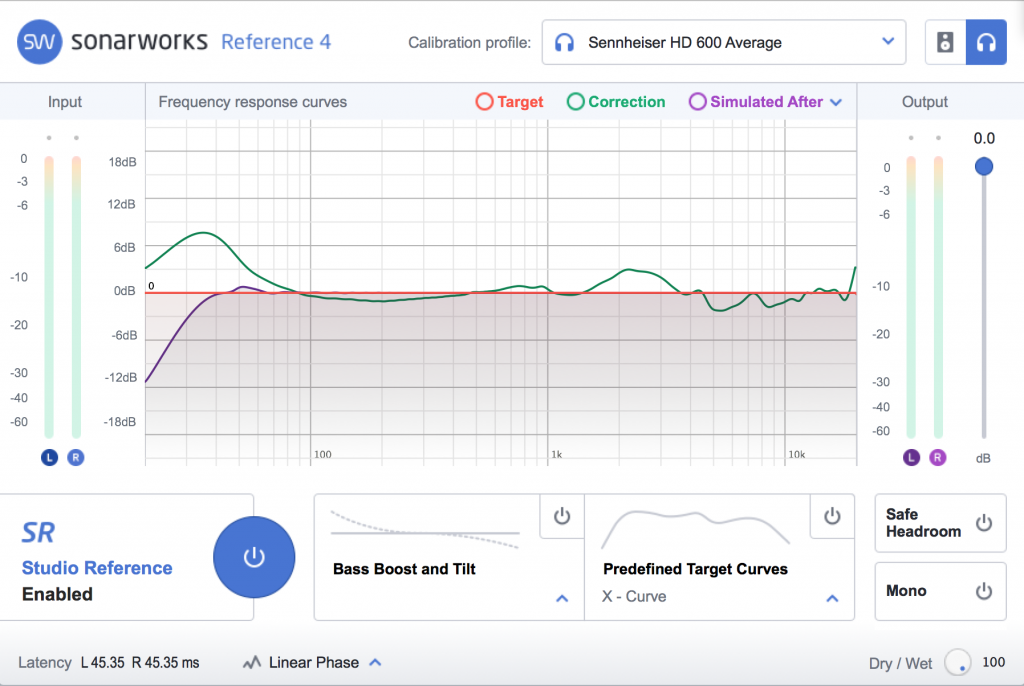
Your headphones may or may not benefit from correction. But in contrast to using EQ for room correction, there are no real drawbacks to using EQ to calibrate the frequency response from headphones if done properly. So give it a try. Another option is Morphit from ToneBoosters. You can also use any EQ plugin to create your own correction curve using your ears if you want full control.
The cross-feed and correction plugins can be placed in different places in your setup. In Reaper you can place them in the Monitoring FX section, which will only affect what you hear, and it will not end up in any renders or exports. If your DAW of choice does not have a dedicated monitor effect chain, you can also place these plugins last in your processing chain on the master channel. Here you have to make sure to bypass them before rendering anything.
Some general questions about headphone listening
Does this work with any headphones? Yes and no. Any headphones will benefit from cross feed and EQ correction if you want to use them for mixing or mastering. However, for the best results you need good headphones. Sennheiser HD600 / 580 / 650 are all great models with amazing performance for the price. In the pricier segment there are models like Focal Elear / Clear, or the Audeze LCD-series. In general, we have found the best results with open back, large diaphragm, over ear headphones of high quality. So that is one possible way of doing it.
Yeah ok, but what about feeling the bass in my chest, surely that is missing from this solution? Yes, it is missing. You will only get the sound reaching your ears. That is none of the physical sensation in the rest of the body that you would get from listening to a speaker system at loud levels. What we have found out though, is that this part of the equation is not really necessary in order to make correct decisions about the sound. Our ears and brain will get all the info that it needs from headphones alone. The physical experience of speakers playing loudly in a room is surely nice, but it is not in any way critical for getting the job done.
What about a headphone amplifier and DAC? You will certainly benefit from having a good DAC (digital-to-analog converter) and a good amplifier. The most critical component though is the headphones themselves. If you have a proper audio interface with a headphone out, and you are not using the built-in headphone jack on your laptop, then you are good to go. You will probably want to upgrade this part eventually, but there is no rush to get into that rabbit hole if you are just starting out.
Conclusion regarding mastering music in headphones
So, is this a method that we can recommend for serious work? Yes! We can go out on a limb and say that mastering with headphones in this way beats any 2-way, near-field speaker setup in a less-than-ideal room when it comes to translation. Surely this should be interesting for all of you who have home studios. Is it the best solution there is for monitoring? No, but it is certainly good enough to get the work done.
If you have the resources to build and equip a professional control room for mastering, that would most likely be the better option. But the headphones solution punches way above its weight when it comes to translation. An acoustically treated room with speakers that have equal or better translation would cost many times more. It is also, quite frankly, quite difficult to achieve.
So whatever headphones and equipment you have at the moment, go ahead and start using cross feed right now and try to mix and master in that. You will find that mastering with headphones becomes so much easier. Furthermore, it very likely even beats your current speaker setup when it comes to translation!
Free bonus!
When your have your listening setup in place, you might also want to dive deeper into the world of mastering. Download our guide to the different frequency areas and what you can find where on the sound spectrum. You will have a great overview of one of the most important parts of mastering.
This pdf is called “The Mastering Frequency Cheat Sheet” and it is completely free!
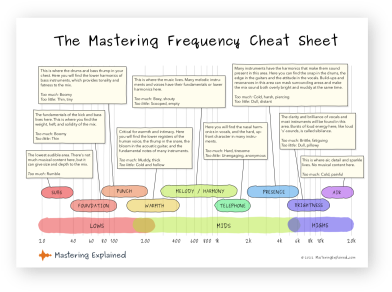

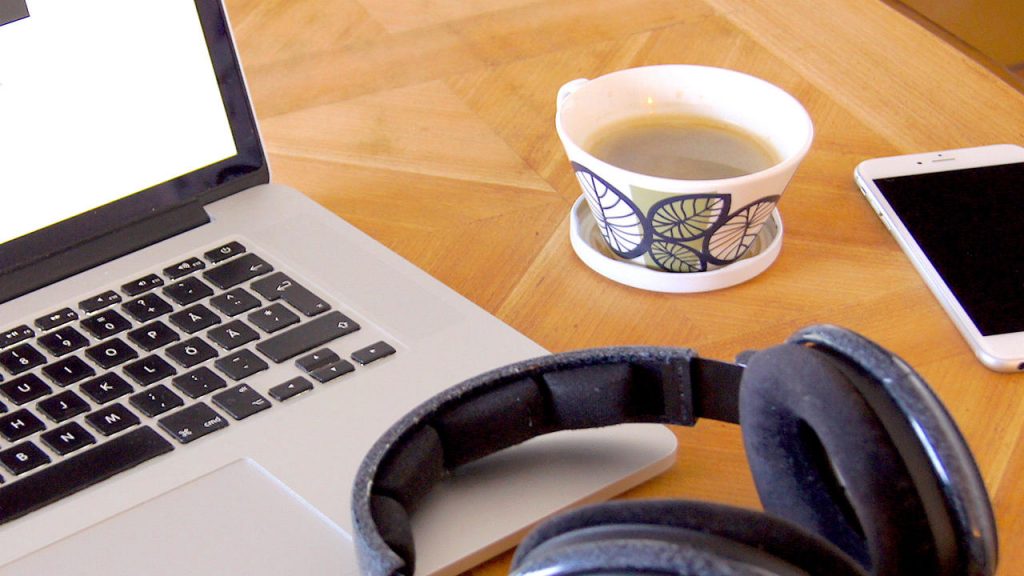
Hey Guys,
Really appreciate you sharing your knowledge! Would you mind sharing your can opener settings? Not really sure where to start and how to set it up properly for mastering. Thank you!!
Hi Emil,
Glad you like it! The screenshot of CanOpener in the article is in fact taken from my monitoring chain and shows the settings that both me and Sofia use. 🙂
But do try it out yourself. The default settings are a good starting point, and then you can tweak the Amount and Angle to adjust the width of the virtual speaker setup to suit your own ears and preference.
/Thomas
Great article and YouTube video!!! I’ve been mixing with headphones for years when I closed my studio out of necessity and translates really well.
Do you have CanOpener first, then followed by Reference 4 on your monitoring channel or vice versa?
Thanks! We have CanOpener first and then Reference. But in practice the order won’t matter unless you have a custom calibration in Reference, with different compensation for left/right. /Thomas